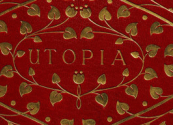Secondary Source for Gulliver’s Travels: The Sexual Politics of Microscopy in Brobdingnag
by Amber Chiac
Secondary Source:
Armintor, Deborah N. “The Sexual Politics of Microscopy in Brobdingnag.” Studies in English Literature 1500-1900 47.3 (2007): 619-640. Web. <https://www.press.jhu.edu/timeline/sel/Armintor_2007.pdf>.
In her 1935 essay “The Microscope and English Imagination,” Marjorie Nicolson argues that in “A Voyage To Brobdingnag,” Gulliver acts as a microscopist, a curious scientist equipped with superior vision in an unknown world. In “The Sexual Politics of Microscopy in Brobdingnag,” Armintor counters that argument by suggesting that Gulliver is not a microscopist but a female-owned “seeing object” that undergoes a three-stage degeneration from “microscopist to miniature microscope to miniature woman-owned microscope and finally to a woman-owned miniature microscope-cum-sexual prop.” She argues that this degeneration mirrors eighteenth-century English anxieties surrounding the “feminization” and commodification of the microscope and the development of “un(re)productive” female sexual toys.
The microscope was invented circa 1600 and in 1665 the prominent scientist Robert Hooke proclaimed, “by the help of microscopes, there is nothing so small as to escape our inquiry” (Armintor, 622). The microscope failed to live up to Hooke’s prediction. In 1680 the Royal Society expressed disappointment over its failure to observe atoms. In 1691 in a speech about the future of microscopes, Hooke describes the microscope’s fall from prestigious instrument of science to tiny popular commodity. He says, “I hear of none that make any other Use of that Instrument, but for Diversion and Pastime and by that reason it is become a portable Instrument, and easy to be carried in one’s pocket.” Hooke is referring to “pocket-microscopes,” which were popular among middle and upper class women and used for both scientific discovery and aesthetic purposes. The once productive and respectable microscope had been “reduced to a mere toy, a literal and metaphorical shrinkage that was, for Hooke, a symbolic castration” (Armintor, 624).
In her article, Nicolson cites Gulliver’s dissection of the wasp and his contribution to Gresham College as evidence that Gulliver is an inquisitive scientific observer but Armintor points out that Gulliver is only able to inspect the insect because his female owner places him in the its vicinity. Like a microscope, Gulliver’s vision is dictated by his female-owners and he is carried around in a “travelling-closet” akin to a carrying case. Also, during this time period, the coach window functioned as a “framed spectacle” for women to showcase their commodities. Gulliver often rode around on Glumdalclitch’s lap in her “open sedan” and recounts that spectators crowded around the car to observe him. According to Armintor, the open sedan does not make a commodity of Glumdalclitch but of the imprisoned Gulliver: her tiny male accessory, an “enlightened man of science turned observing object and object observed” (629).
When Gulliver observes lice crawling on the beggar’s body, he says, “I could see distinctly the limbs of these vermin with my naked eye, much better than those of an European louse through a microscope” and “I should have been curious enough to dissect one of them, if I had proper instruments (which I unluckily left behind me in the ship) although indeed the sight was so nauseous, that it perfectly turned my stomach” (151). Gulliver responds to what he sees in a purely sensory way. Gulliver is emasculated (deprived of his tools), a slave to his magnified vision and objectified by Glumdalclitch and is therefore unable to move from what John Locke calls “perception” (sensory) to “reflection” (intellectual) (630). He misses the “larger picture” and cannot make the connection between his predicament and the predicament of the beggar. Gulliver symbolizes the “enlightened Englishman’s metaphorical reduction to the position of a pocket microscope—a hyper-perceptive but astonishingly unreflective female commodity” (631).
The theme of female consumption is also evident in Swift’s depiction of the queen’s gluttonous appetite and grotesque way of eating and most pointedly in his depiction of Gulliver as a sexual device. When Gulliver is given to the queen’s maids of honor, he recalls that the “ prettiest giantess would sometimes set me astride upon one of her nipples, with many other tricks, wherein the reader will excuse me for not being over particular. But, I was so much displeased, that I entreated Glumdalclitch to contrive some excuse for not seeing that young lady any more” (158). Armintor calls this “the ultimate act of female consumption”— “rendering Gulliver’s own genitalia both physically and symbolically insignificant” (634). Afterward, Gulliver says, “what gave me most uneasiness among these maids of honor… was to see them use me…like a creature who had no sort of consequence” (p. 158). If Gulliver were being used as a sexual prop, his vision would have been restricted to the inside of female genitalia:“an image blown up to abstraction and at the expense of the bigger picture” (634). According to Armintor Swift would probably have been familiar with the Rorschachian image of a magnified fly’s eyes from Hooke’s book Micrographia published in 1665. Armintor links this imagery to earlier incidents in Brobdingnag when Gulliver observes flies.
Armintor’s argument is that Gulliver represents “enlightened Englishmen in the age of pocket microscopy and their imagined degeneration from male giant-among-the- dwarfs” to a tiny objectified commodity controlled by “scientifically and sexually curious female consumers” (634). In “A Voyage to Brobdingnag,” Swift reveals the “gynophobia latent in Enlightenment science’s aversion to the new consumerism”(626) and “satirizes the misogyny behind ‘enlightened’ English masculinity and the castration threat it projects onto the new female consumer who is imagined to have abused and belittled both the microscope and the phallus by wresting them from their original and rightful (male) owners” (635).


